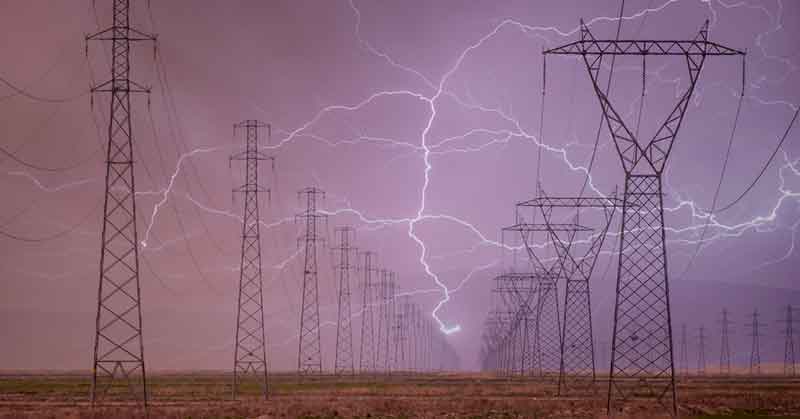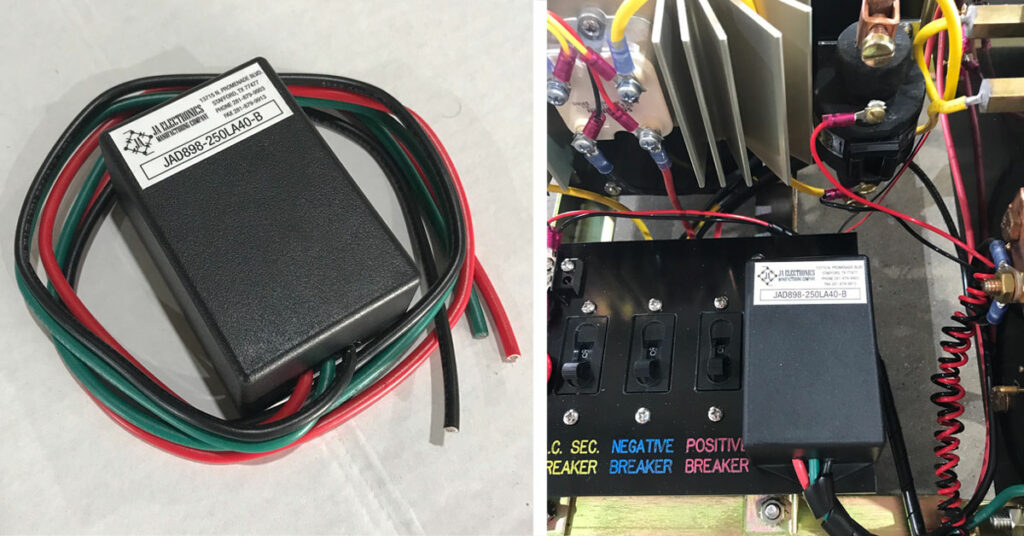The easy to install “underdog” JA Electronics D8998 Lightning Arrestor takes on Mr. Direct Lightning Strike to provides significant lightning surge protection…
In this corner we have the heavyweight champion 10/350 100kA knockout champ – Mr. Direct Lightning Strike. In the other corner we have the 6 oz, 3” long x 2” wide x 1.5” tall underdog challenger- the small but slippery D898 Lightning Arrestor.
Let’s get ready to rumble… Lightning Strike sets up and delivers its best hit – a 10/350 surge packing 100kA of punch. The little D898 looks doomed, but in less time than a blink of an eye, the D898 engages, side slips the direct blow and deflects the surge punch to the ground. It’s a knockout for the underdog D898 Lightning Arrestor.

Lightning is no trivial thing for cathodic protection systems with thousands of rectifier units, remote monitoring units and other electrical devices spread across the United States.
Most of the United States is considered high risk territory for lightning strikes, with Florida having the most strikes due to its numerous summer storms.
Two Types of Lightning Strikes
What most people don’t know is that there are two different lightning strikes. The most common is the negative strike. Negative lightning strikes typically occur with warmer weather storms and represent 90% of strikes worldwide.
The positive lightning strike, while much rarer, packs a bigger punch with higher peak currents. As a result, it transfers more charge and has a higher specific energy. Positive strikes occur much more frequently during cold front storms.
Induced Lightning Strikes Can Affect Cathodic Protection Equipment
In addition to direct strikes, cloud to cloud strikes, which occur much more frequently than direct strikes, can in some cases create an induced strike. These induced strikes can transmit along a power line to connected devices including CP Rectifiers. Although much less powerful than a direct strike, they can still be dangerous to equipment.
What is a lightning arrestor and how does it work?
A lightning arrestor is a device used to protect important equipment from lightning strikes and indirect surges.

The JA Electronic D898 lightning arrestor is a metal oxide varistor (MOV) device with a low leakage current. It acts as an insulator. It is effectively an open circuit (does not allow current to flow) at normal circuit voltages.
However, when a surge drives the voltage up in a split second, the arrestor quickly reaches its clamping or turn-on point and its resistance drops dramatically to divert the surge to ground.
The D898 Lightning Arrestor has been installed on thousands of cathodic protection systems and devices worldwide since 2006. It is available to install on new JA Electronics cathodic protection rectifiers, or as a retrofit to any rectifier unit including those by Universal, IRT and Cathodic Rectifier.
The lightning arrestor is easy to install and provides significant protection against lightning surges.
For more information contact your JA Electronics representative.
